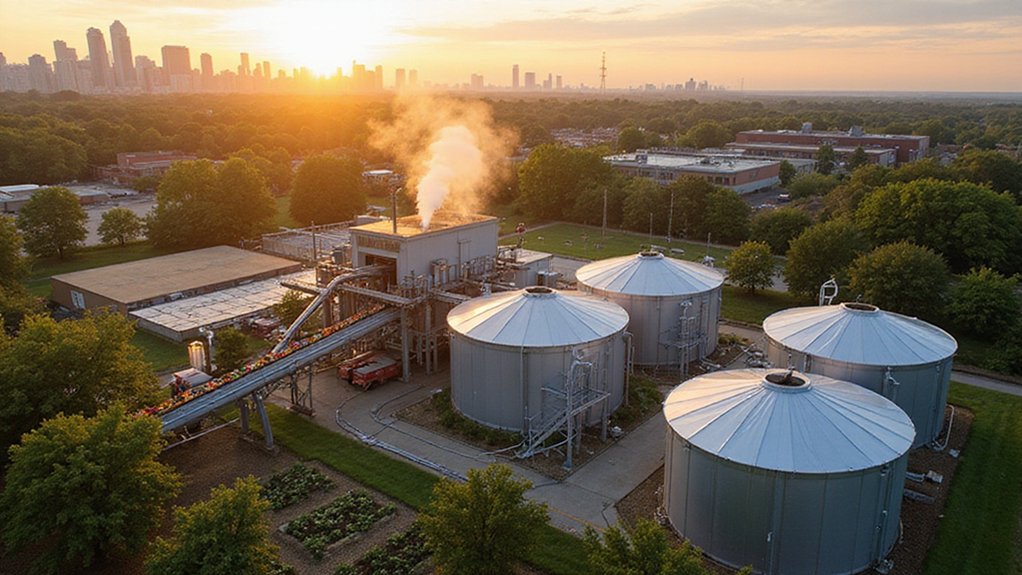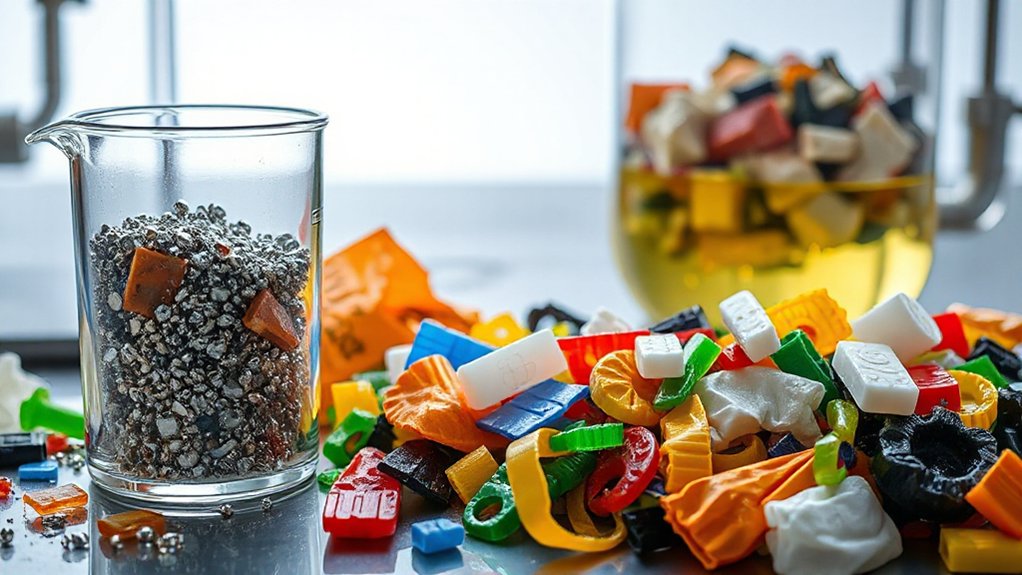The Green Era Campus in Chicago has found a way to turn leftover food into power. The facility sits on an old industrial site that’s now helping the environment. It uses special technology to process 40,000 tons of food waste each year instead of sending it to landfills. The process creates biogas for energy and compost for growing plants. This project isn’t just good for the planet—it’s creating jobs and supporting local farmers too.
While many cities struggle with mounting food waste, Chicago’s Green Era Campus is turning this challenge into an opportunity. Located on a former brownfield site in south Chicago, this innovative facility transforms food scraps into clean energy, rich soil, and local jobs through its circular system approach.
The campus uses anaerobic digestion technology to process food waste from grocery chains like Mariano’s. This natural process breaks down organic matter without oxygen, producing renewable biogas and nutrient-dense compost. The facility includes depackaging equipment that separates food from containers before processing.
“We’re taking what would be garbage and turning it into resources,” explains a campus representative. The biogas generated powers the facility itself, with excess available as renewable electricity or natural gas alternative. The remaining material becomes high-quality compost for local farming. The anaerobic digester has already diverted over 40,000 tons of food waste from landfills since its launch.
The Urban Growers Collective has partnered with Green Era to expand waste collection efforts. Together, they aim to divert tons of food waste from Chicago landfills. Future plans include collecting from schools, restaurants, and other institutions throughout the city.
Environmental benefits are significant. By keeping organic waste out of landfills, the campus reduces methane emissions and pollution. The project has transformed a century-old unused industrial site into productive green space that serves the community. The initiative has helped avoid nearly 1 million pounds of carbon emissions through responsible waste diversion.
Green Era Campus proves environmental restoration is possible, turning abandoned industrial land into a climate solution that benefits everyone.
For nearby low-income neighborhoods, the campus brings multiple advantages. Residents gain access to locally grown, nutritious food, while new jobs in waste management, energy production, and agriculture provide economic opportunities. The on-site education center offers job training and teaches visitors about sustainable food systems. Unlike many energy sources, the campus’s bioenergy system provides consistent electricity generation regardless of weather conditions, ensuring reliable power for community needs.
“This is a model for urban sustainability,” notes a city official. The initiative demonstrates how cities can address waste challenges while creating clean energy and supporting local economies.
As Chicago faces growing environmental concerns, Green Era Campus shows how innovative thinking can convert everyday food scraps into valuable resources, proving that one community’s waste truly can become another’s treasure.
References
- https://blockclubchicago.org/2025/04/29/how-green-era-campus-is-turning-food-waste-into-clean-energy-soil-and-jobs-on-south-side/
- https://www.energytech.com/renewables/article/55280612/chicago-supermarkets-food-waste-program-proving-trash-is-energy
- https://www.greenerachicago.org
- https://www.youtube.com/watch?v=NfeGquVcZGU
- https://www.waste360.com/food-waste/chicago-green-campus-plans-to-turn-food-waste-to-energy-and-grow-more-food









